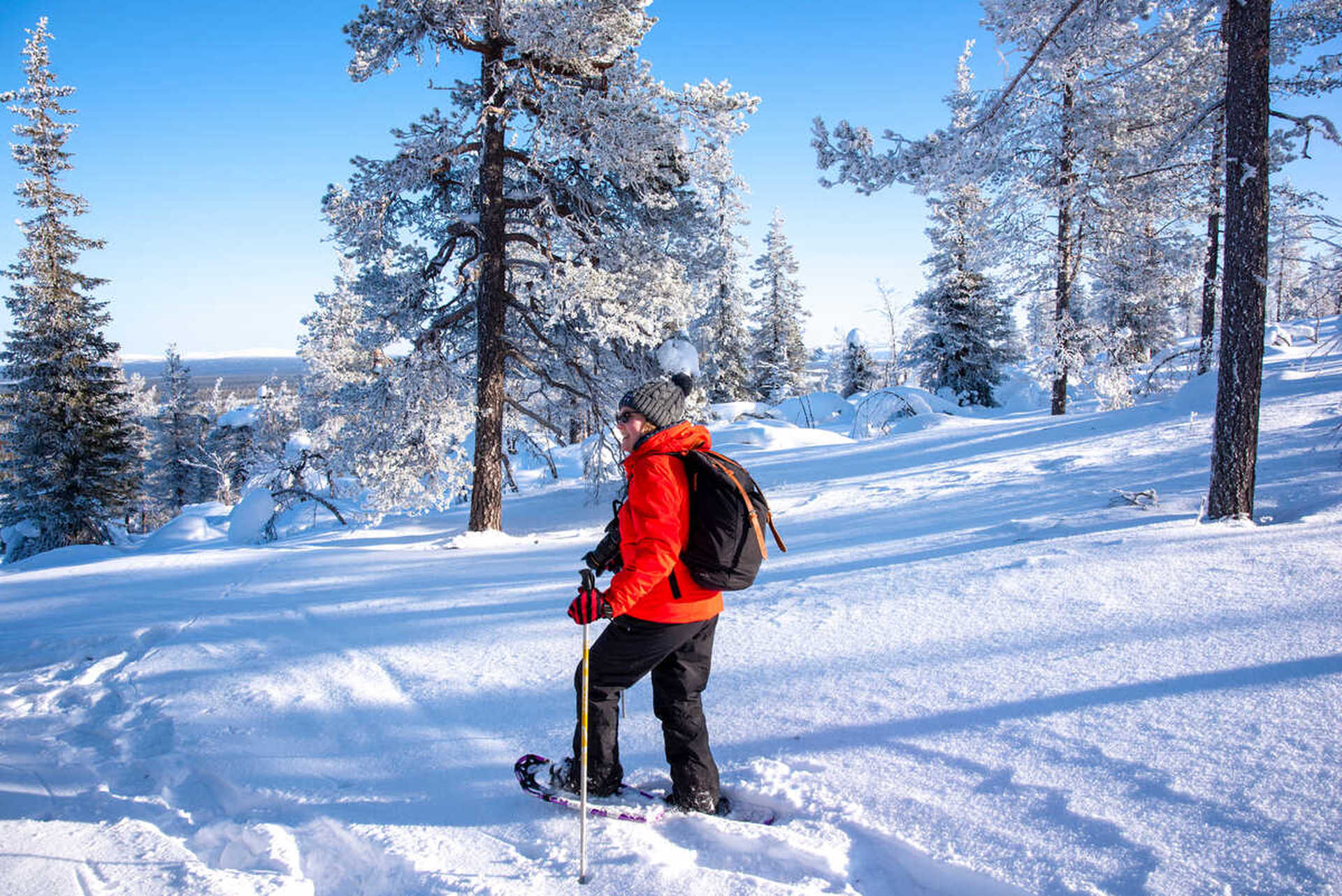PRACTICE HIKING
The best training by far for a trip to Finland is to get your walking boots on and get lots of miles under your belt. Whether this is two to three hours walking locally or full days away on your nearest hills, you just need to clock up lots of hours on your feet as more than anything else, it is just doing physical exercise every day that people find tiring. And the easiest way to do this is to have spent lots of hours just walking. Hiking practice allows you to understand the stress your joints will be put under and how well you can deal with this. It also allows you to wear in your boots as this takes some time and can often be uncomfortable. Start with a comfortable distance that suits you and slowly try to work your way up to a 5-6 hour trek. Try to also choose routes which area bit rougher underfoot to get you used to less manicured terrain. If you can do this over a few consecutive days then you'll be in good stead for trekking in Norway.
AEROBIC TRAINING
Aerobic (or cardio) training will be a key factor in your enjoyment of trekking through snow in particular. Aerobic literally means 'requiring free oxygen' and refers to the use of oxygen to adequately meet energy demands during exercise via aerobic metabolism.
Aerobic exercise, unlike anaerobic exercise, requires oxygen for elongated periods of time. Examples of aerobic exercise would be lane swimming, long distance jogging, walking and cycling. Try to consider the muscles you will be using for your activities, for example, your core and arms will be very important whilst dogsledding and snowmobiling whereas your thighs will probably feel a little tired after snowshoeing. Try to include all these muscles in your workout; if you aren't lucky enough to be able to get outside to do this, using a cross trainer is a good way of building all your muscles in a gym environment. Building up the time you exercise for, helps these muscles to build stamina whilst also improving your general fitness.
STRENGTH TRAINING
Any training plan should also include strength training. Although not as important as your aerobic training, strengthening your upper body, core and, in particular, your legs, will greatly increase your chances of success. You'll be on your legs for 5 - 7 hours a day, even whilst sat astride a snowmobile they will be working, and you therefore need them to be strong enough to take the punishment.
To strengthen your legs we recommend doing the following exercises:
- Squats
- Front and reverse leg curls
- Lunges
- Step aerobics
Remember when doing these exercises to keep watch of your technique. Exercises done with poor technique will more often than not harm you instead of help you. Building upper body and core strength is also crucial as you'll not only be on the move for hours, but you'll also be carrying a daysack.
We recommend the following exercises to strengthen your upper body and core:
- Shoulder presses
- Back and shoulder flyes
- Sit-ups
- Kettle-bell rows / swings
Remember to stretch after all exercise sessions! Increasing flexibility will allow your body to recover more quickly overnight after exercising all day. No one wants to try something new after waking up with stiff joints, aching all over!
THE IMPORTANCE OF STRETCHING
Most sports injuries occur due to poor stretching. This is particularly true in the wilderness where repetitive movements over tough terrain put a lot of stress on joints and muscle. To loosen your muscles and increase suppleness we recommend adopting a regular stretching regime. Spend 10 minutes every morning stretching your main muscle groups. When being active in snowy environments, many people find the key areas prone to injury or stiffness are your hips and knees, building up a good muscular system around these whilst maintaining their flexibility will vastly improve your ability to perform well in the cold temperatures.










